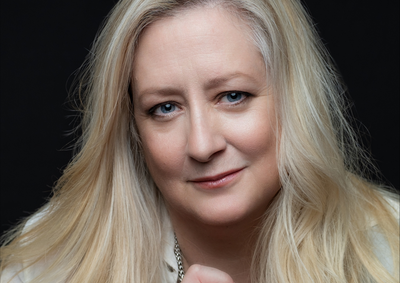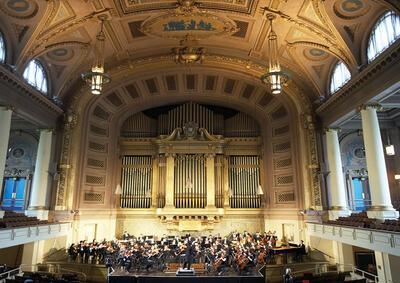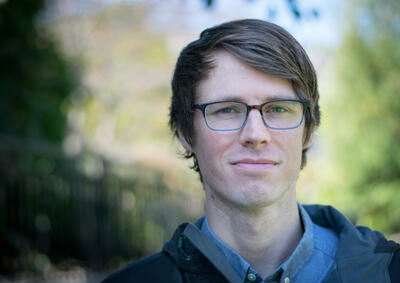Virginia Brisac Moore was a member of the School's first graduating class
In December of 1783, Yale President Ezra Stiles met Lucinda Foote, a 12-year-old prodigy and University applicant. “Were it not for her sex,” Stiles wrote, reflecting on their interview, “she would be considered fit to be admitted.”
While it would take until 1969 for Yale College to open its doors to women, the tides of gender equality began to turn at Yale’s graduate and professional schools in the mid-19th century—and it was the art schools that led the way. The Yale School of Fine Arts became Yale’s first co-educational school when it opened in 1869. And when the newly established Yale School of Music conferred its first Bachelor of Music degrees in 1894, one of those four degrees was awarded to a woman. That woman was Stratford, Conn., resident Virginia Brisac Moore.
While the details of her life are largely unknown, certain clues point to an upbringing in the world of arts and music. Virginia was born on May 17, 1859, and was among the youngest of nine children. Her father, Charles Moore, was a lace merchant who at various points in his life kept shops in Philadelphia, San Francisco, and New York City. His was a job that required artistic taste, something he clearly passed on to his children. Two of Virginia’s older brothers, Charles Herbert Moore and Howard Berndtson Moore, became successful painters— Charles Herbert is known even today for his landscape paintings. Virginia’s maternal grandfather, Elof Berndtson (later Anglicized to Benson), was a sea captain who emigrated from Sweden to the United States in the early 19thcentury, and her mother was a devout member of the Swedenborgian church. It is known that Virginia, too, was a member of the Swedenborgian Church of New Jerusalem. Perhaps this was one outlet for music making in her early life.
At some point before Virginia was born, the Moore family relocated from Manhattan to Stratford, where Virginia grew up. She attended the Guy B. Day School in Bridgeport, Conn., a small, co-educational college preparatory “classical school.” There, Virginia would have taken classes with subjects in the trivium (grammar, rhetoric, and dialectic) and the quadrivium (arithmetic, astronomy, geometry, and music).
Several alumni of the Guy B. Day School went on to study at Yale. So, too, did Virginia; curiously, after a long break in her schooling. Virginia entered the School of Music as a 35-year-old. It is not known what she studied at the School of Music or what she did in the years after receiving her degree, but one thing seems certain: Virginia embodied a life of independence that was unorthodox for a woman of her time. She remained unmarried and died at age 73 of appendicitis.
Virginia Brisac Moore, unlike Lucinda Foote before her, was fortunate to have been born in an era in which co-education was increasingly becoming the norm.
Soprano Adrienne Lotto ’20MM is a student in the early music, oratorio, and chamber ensemble program at the Yale School of Music and Yale Institute of Sacred Music.






